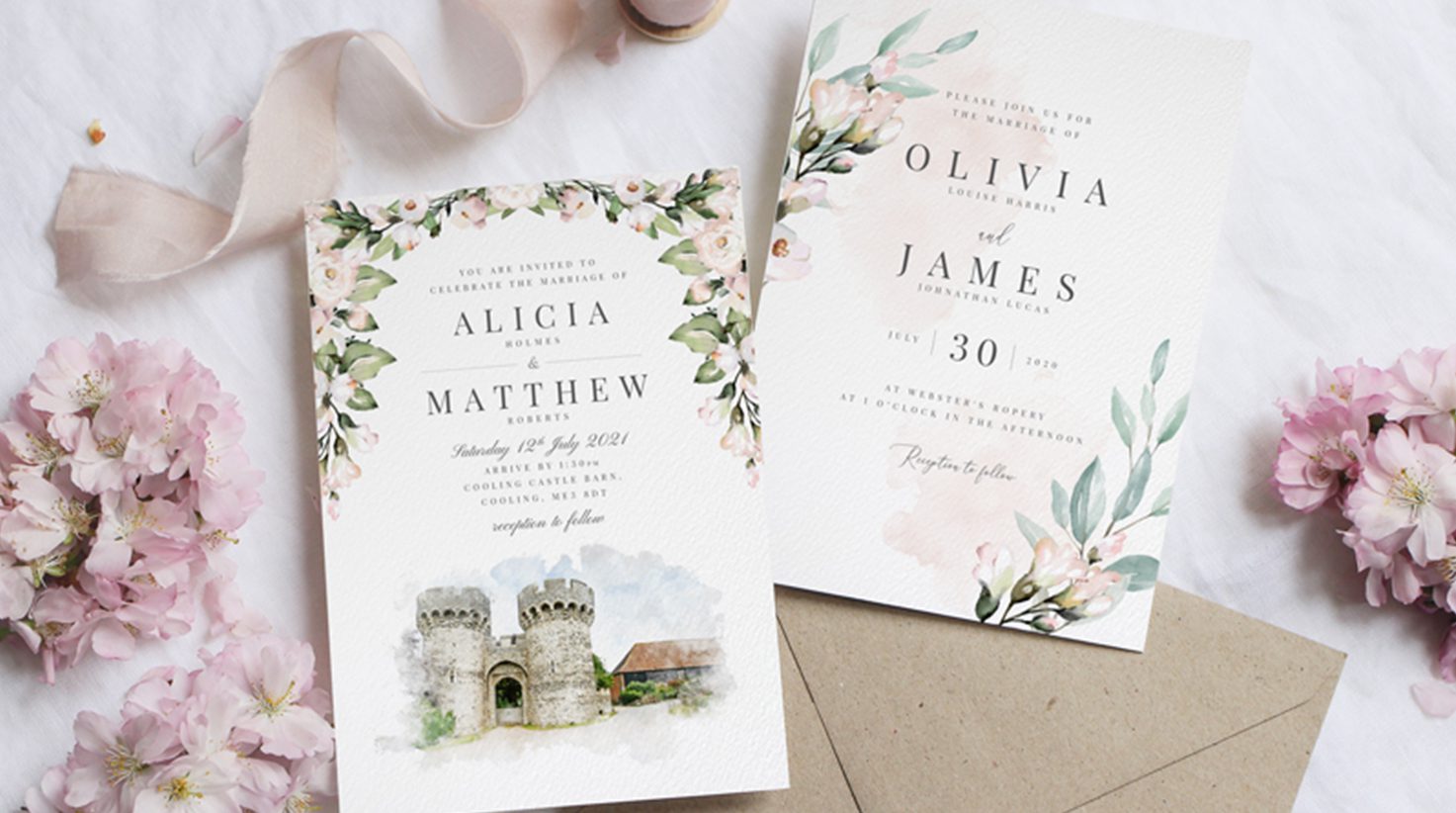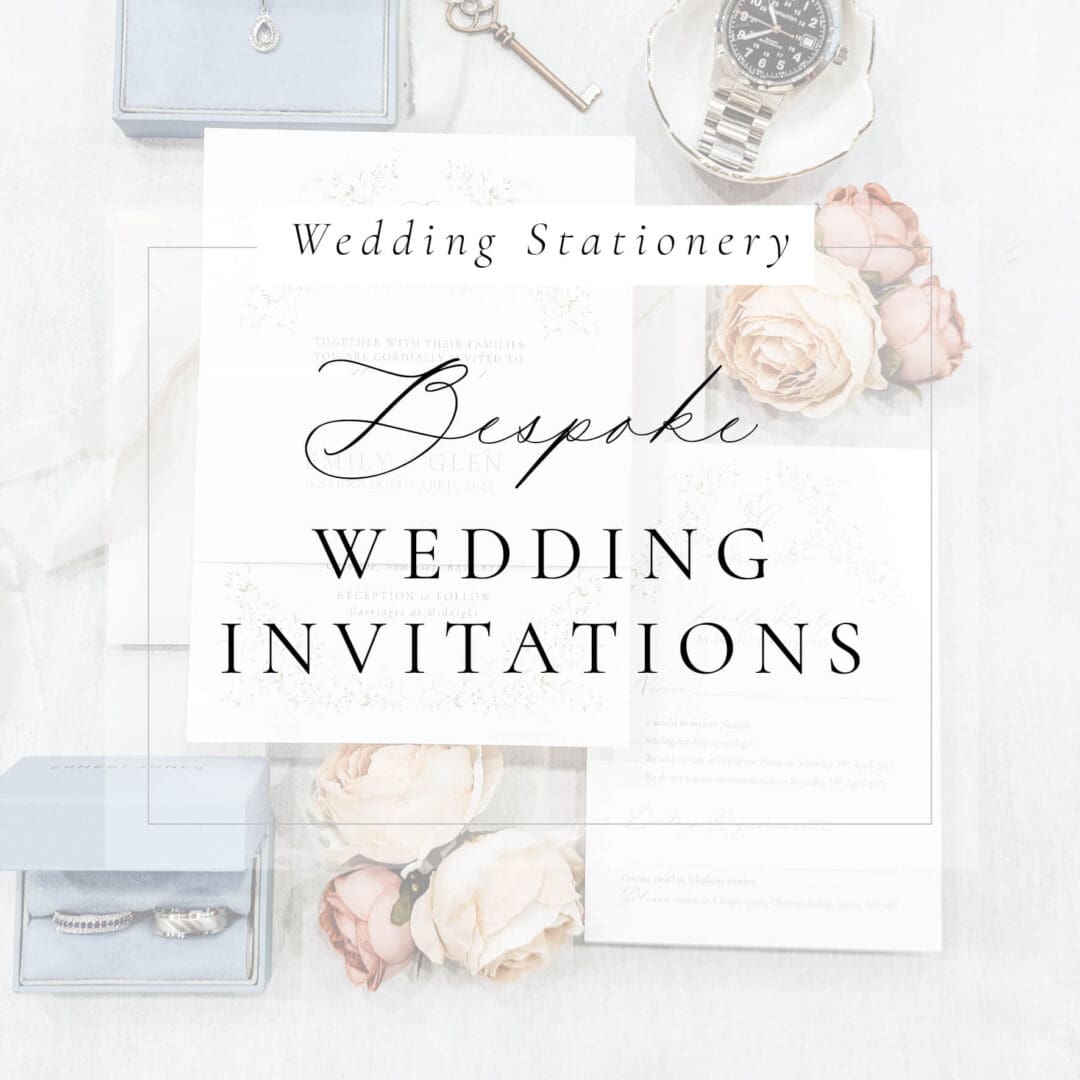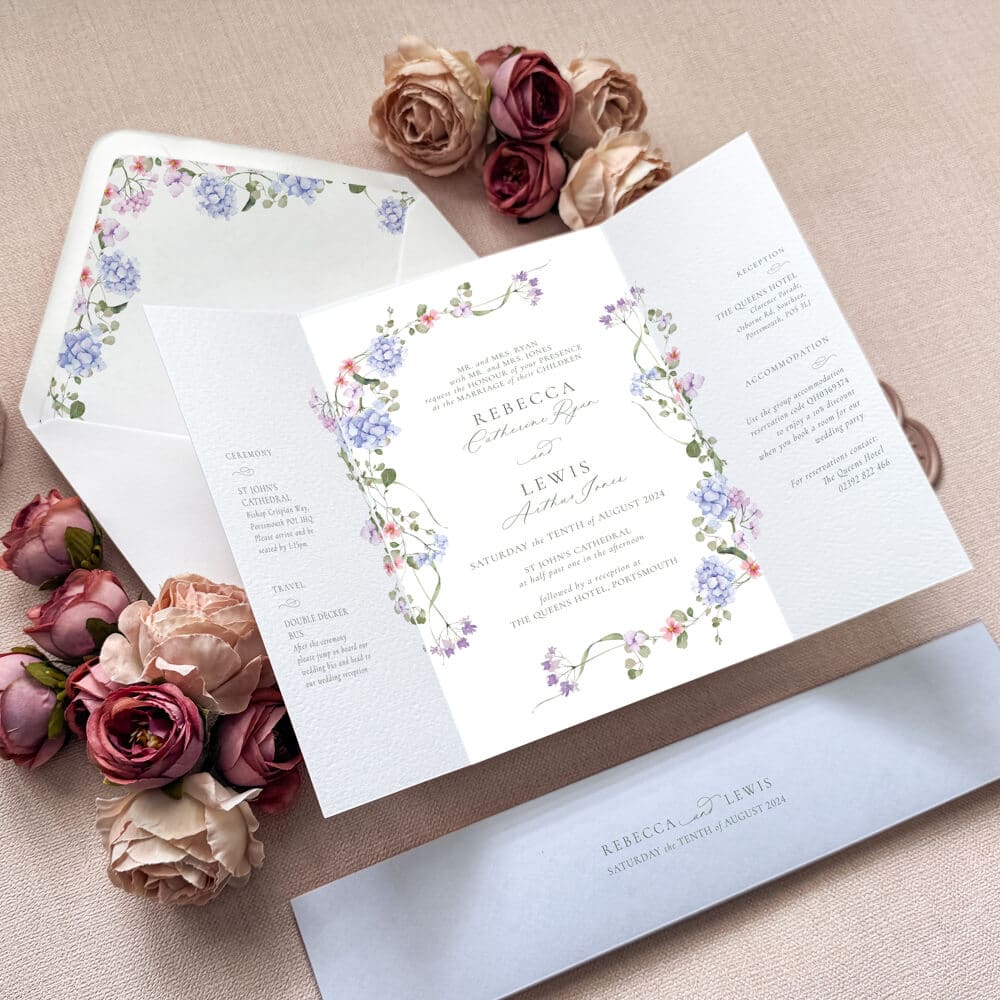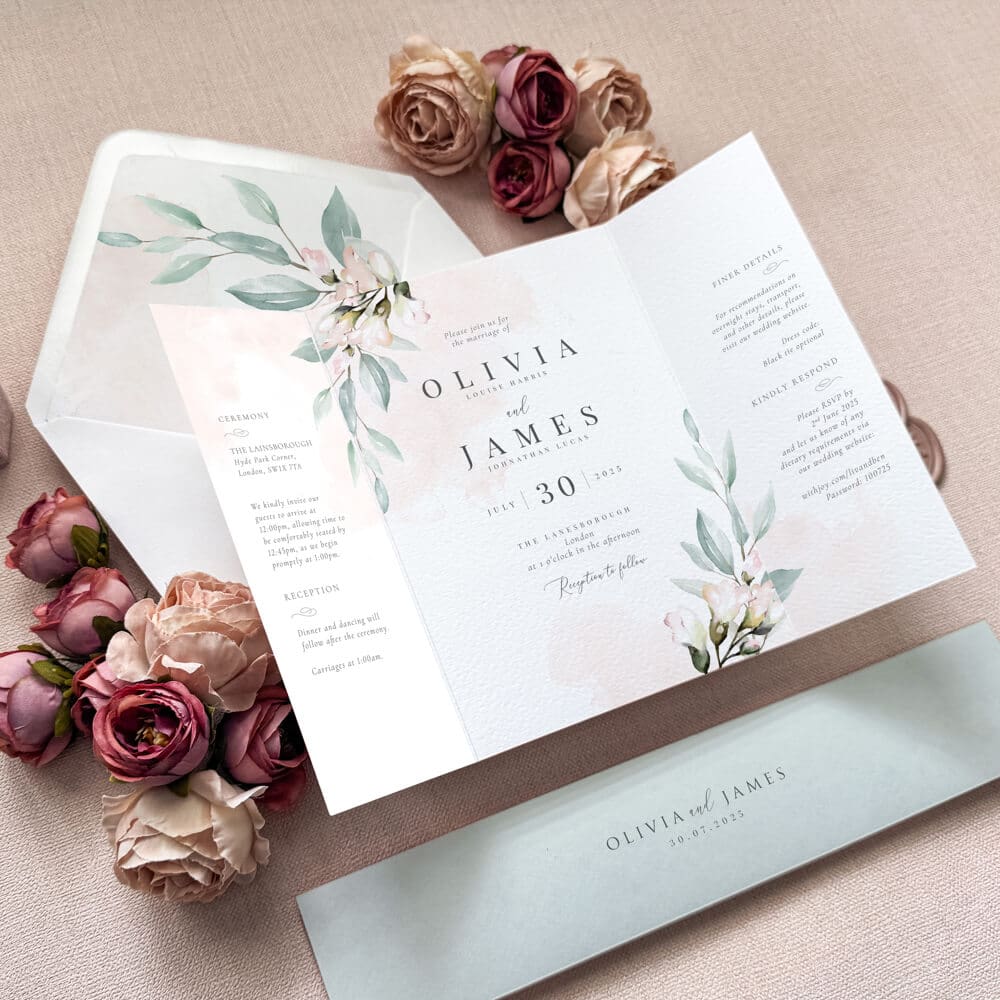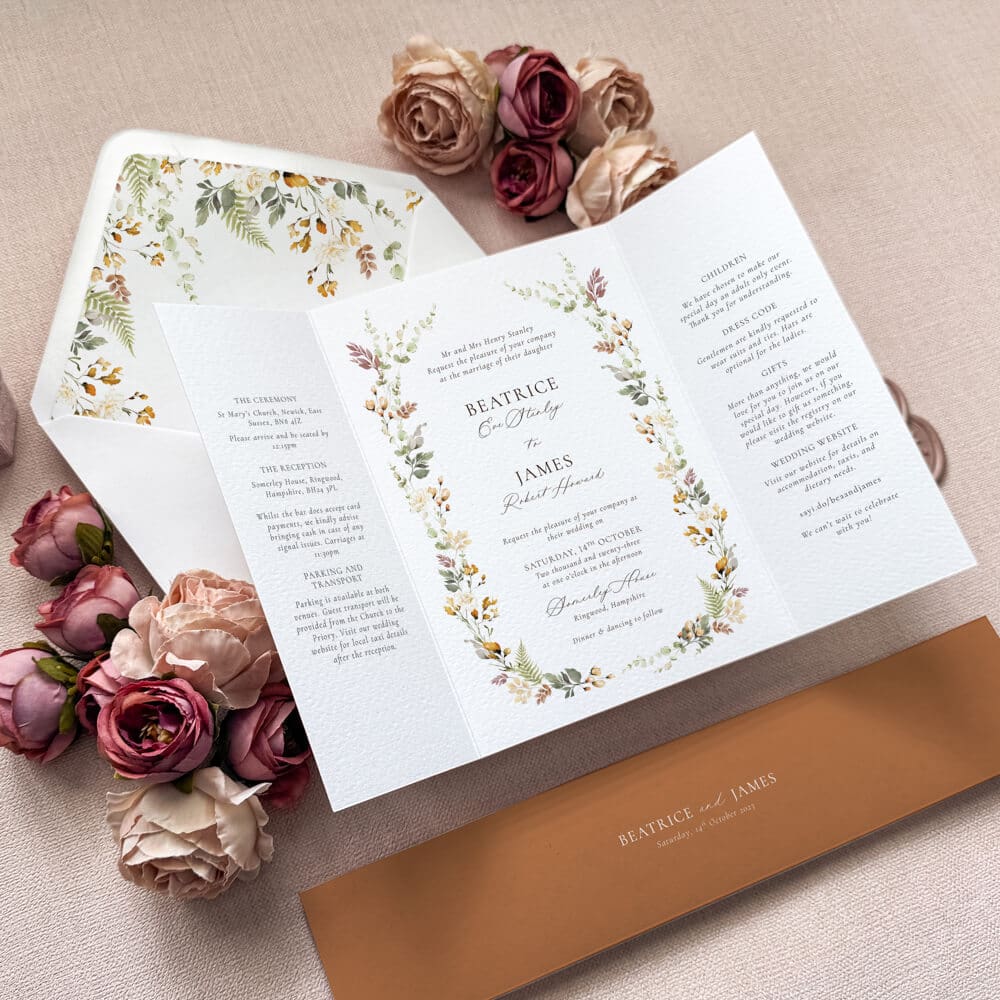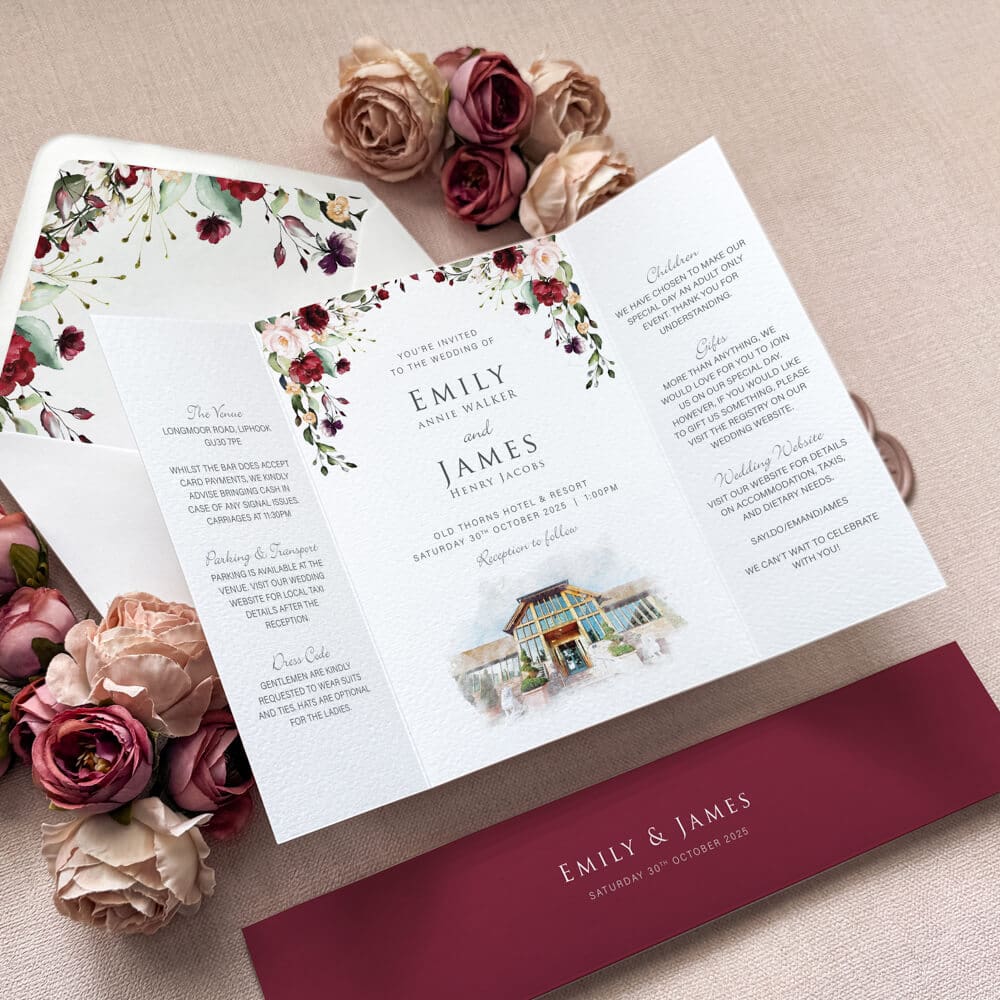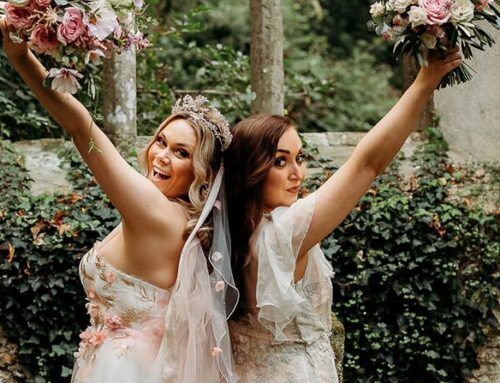Deciding on the wording for your wedding invitation can be one of the hardest parts of designing your stationery, however our team have some great tips. Whether you need help with how to address a wedding invite, the etiquette rules or even the tone of voice, the following are the most important points to consider.
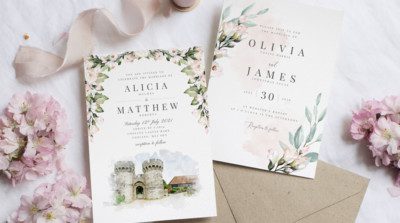
Tone of voice
If you are planning a traditional wedding, it is usually best to stick to more formal language. However, for casual days there is more room for personalisation and character within the wording.
The greeting
Traditionally, if the parents of the bride are paying for the wedding, the invitation should be sent from them, with wording such as ‘Mr & Mrs Smith request the pleasure of your company at the wedding of their daughter’. However, many couples today pay for their own weddings or share the cost with both families, so this is very much a personal preference.
Key information
Perhaps the most important wedding invitation words are the details for the day, and you will need to include the address and times for the ceremony and reception.
Be specific
Your guests will appreciate a clear invite, so be specific about whether they are invited to the ceremony and the reception or just the evening reception. In addition, make sure to include details of whether plus ones and children are invited.
RSVP
Many couples choose to include an RSVP card with the invite; however, you will need to provide an address and an RSVP deadline, which is usually set to 4 weeks before the wedding. The RSVP card is also a great chance to asks guests if they have any specific requirements.
Wedding invitation wording
Wedding invitation wording should be personalised to you as a couple, and we can design stunning stationery which embodies the tone of your special day. There are many examples available to view on our website, including a range of wedding stationery packages which will ensure your guests are provided with everything they need for your wedding day.
What to Include on Your Wedding Invitation
All wedding invitations should include the following elements:
- Who’s hosting (optional)
- The request to come to the wedding
- The names of the couple
- The date and time
- The location
- Reception information
The Host
Traditionally, the bride’s parents are the hosts of the wedding and are named first at the top of the invitation for very formal weddings. More couples these days are hosting their own weddings, or do so ‘together with their parents’.
Invitation Wording Examples
Together with their families
Bride’s full name & Groom’s full name
request the honour of your presence
at their wedding
on the fifth of May, two thousand and twenty-two
at one o’clock in the afternoon
Old Thorns Hotel
Liphook
Dinner & dancing to follow
Bride’s full name & Groom’s full name
request the pleasure of your company
at their wedding
on the fifth of May, two thousand and twenty-two
at half past one o’clock in the afternoon
Old Thorns Hotel
Liphook
Reception to follow
Please join us for the wedding of
Bride’s full name & Groom’s full name
on the fifth of May, two thousand and twenty-two
at half past one o’clock in the afternoon
St.Michael’s Church
Liphook
and afterward at the reception
The Old Thorns
Liphook
Whose name should go first on a wedding invitation?
Traditionally the name of the bride always precedes the groom’s name. Formal invitations issued by the bride’s parents refer to her by her first and middle names, the groom by his full name and title; if the couple is hosting by themselves, their titles are optional.
For same-sex couples, the traditional rule isn’t applicable. Whether it’s “David and James” or “James and David,” it’s going to be lovely either way.

